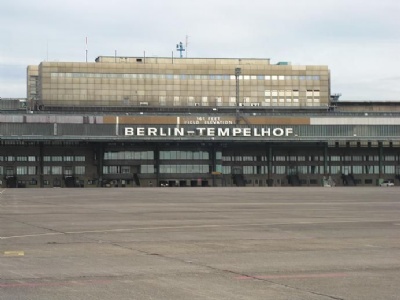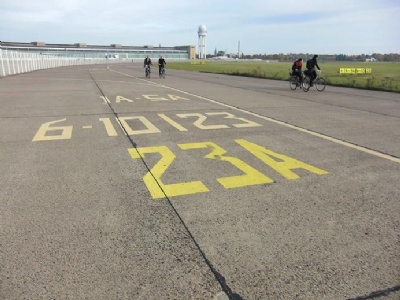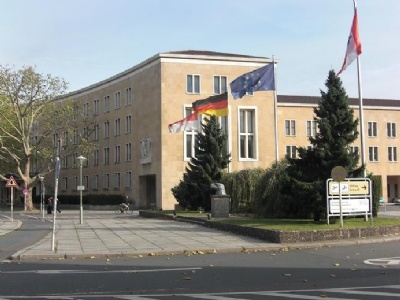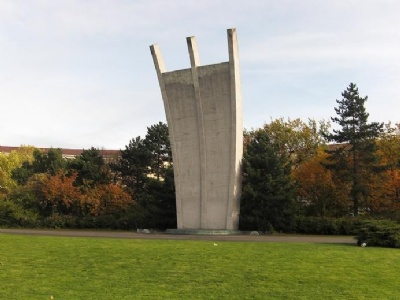Berlin – Tempelhof
This airport is located in central Berlin and was opened in 1927. In 1934, an extensive expansion of the airport began which required demolition of the nearby Columbiahaus concentration camp. By the end of the thirties, the airport was one of the busiest in the world. The size of the airport made it practical to use at large Nazi mass meetings. At the celebration of May 1, 1933, 500,000 people stood at the airport and were flanked by high columns of lightbeams which lightened up the evening dark. Seen from above, the airport has the shape of an eagle. The airport is otherwise best known for what has been called the Berlin blockade between 24 June 1948 and 12 May 1949. Between that period, the Soviet Union attempted to cut off all supplies and materials to West Berlin by shutting down all roads and railways into West Berlin. The aim of the Soviet Union was to gain control over Berlin and not just East Berlin. As a countermeasure, the American and British air force started an air bridge on June 24 and flew supplies to West Berlin through the Tempelhof airport. More than 200,000 flights were made and a total of about 13,000 tons of supplies were flown into West Berlin, making the blockade ineffective. The Soviet Union stopped the blockade on May 12, 1949. In 2006 Tempelhof was closed and is now a public park (Tempelhofer Park) and guided tours are offered in the former terminal.
Current status: Preserved with monument (2010).
Address: Platz der Luftbrücke, Berlin.
Get there: Metro to Platz der Luftbrücke Station.
Follow up in books: Gaddis, John Lewis: The Cold War: A New History (2006).




The Berlin blockade was the first serious confrontation between the United States and the Soviet Union and resulted in a partition of Germany in october 1949. 39 british and 31 american airmen died during the blockade. Although Tempelhof is now closed down, Tempelhof is Berlin’s most famous airport. All because of their history.